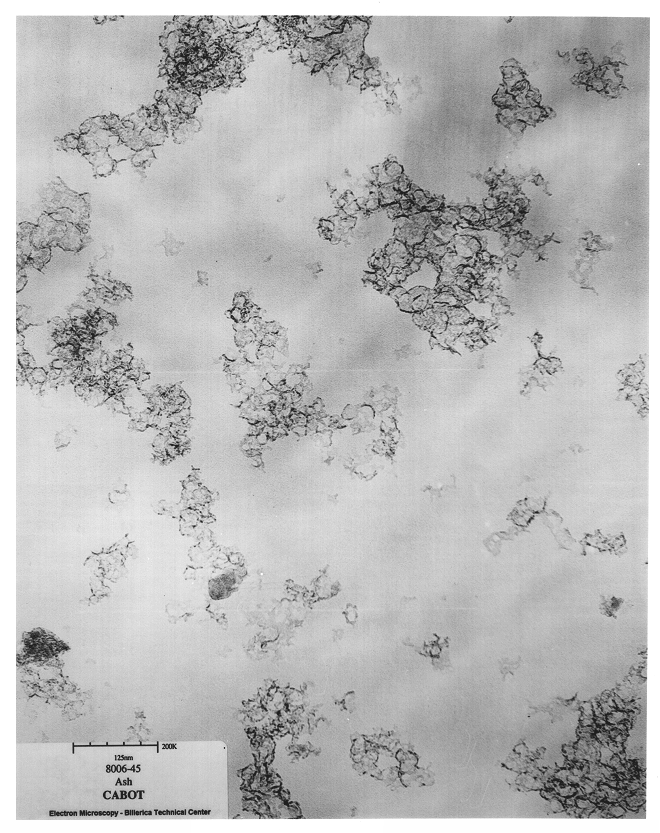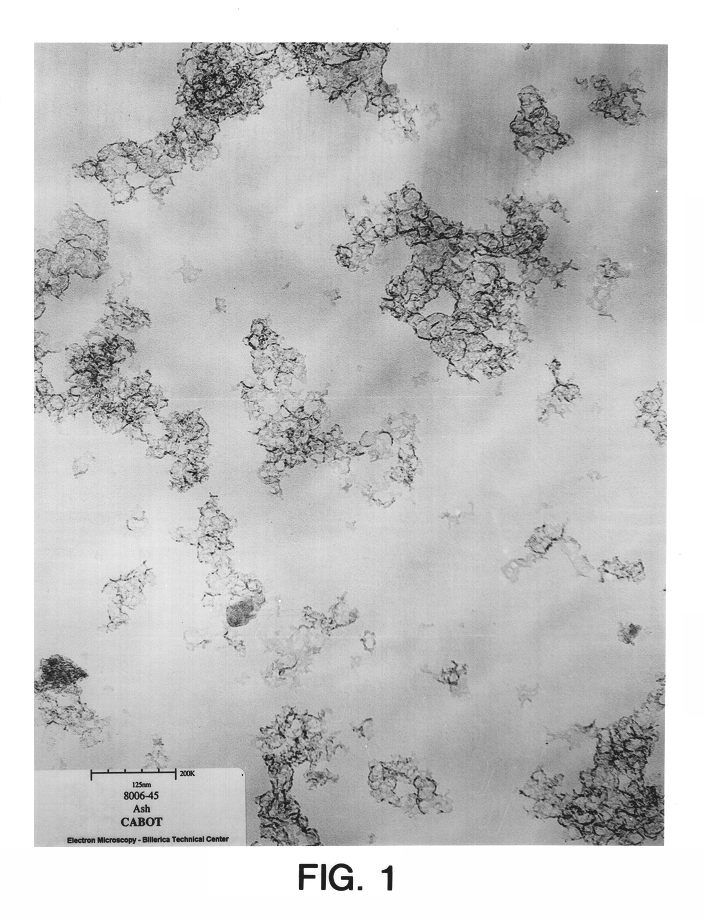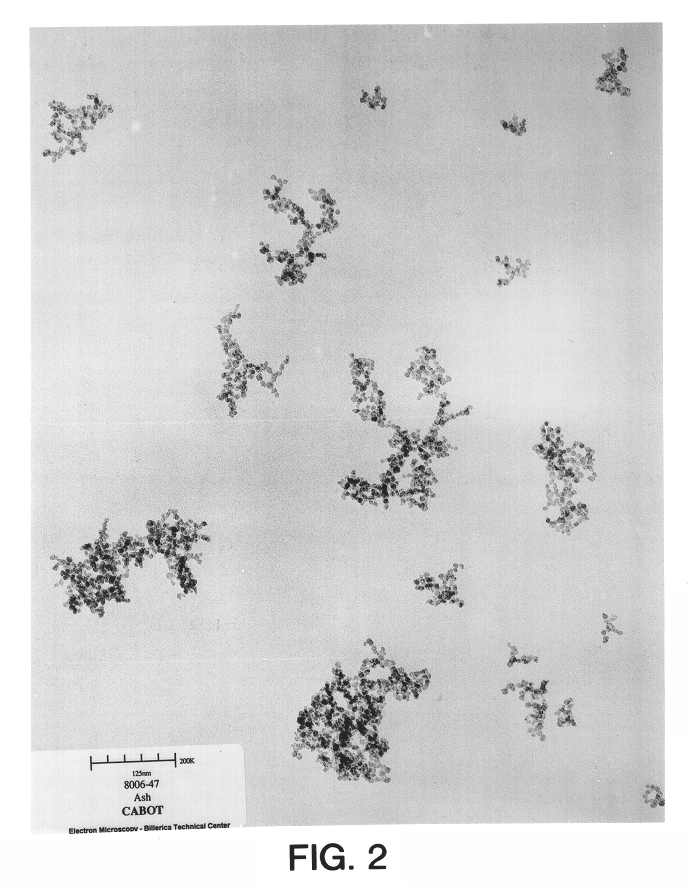Methods for preparing silica-coated carbon products
a technology of carbon products and silica, which is applied in the field of making silica-coated carbon products, can solve the problems of poor performance, poor filler-elastomer interaction, and reduced fuel consumption of vehicles using tires
- Summary
- Abstract
- Description
- Claims
- Application Information
AI Technical Summary
Problems solved by technology
Method used
Image
Examples
example 1
To a 2-L glass vessel equipped with a mechanical stirrer and heating mantel were added 380 g deionized (DI) water. The agitator was turned on, and the water was heated to 80-85.degree. C. Twenty grams of fluffy carbon black having a t-area of 135 m.sup.2 / g and a crushed DBP of 106 ml / 100 g were then carefully added to make a slurry of carbon black containing 5% by weight carbon black and 95% by weight water.
In a separate glass vessel were added 14.4 g sodium silicate solution (Sodium Silicate N made by PQ Corporation, USA) containing 28.7% SiO.sub.2 and 8.9% Na.sub.2 O by weight. The silicate solution was then diluted with 165 g DI water. To remove the polysiloxane molecules from the solution, the pH was raised to 12.6 by adding 3.8 g NaOH.
Two ion-exchange columns were prepared by placing 110 ml of HGR-W2 Dowex resin in each of two 19 mm diameter glass columns. Using a Masterflex peristaltic pump, the dilute silica solution was then pumped through the strong-acid cation exchange co...
example 2
A second sample of silica-coated carbon black was prepared in the same manner as in Example 1 except that before the monosilicic acid was fed to the carbon-black solution, the pH of the original carbon black slurry was adjusted to 10 using a dilute NaOH solution. As the silicic acid was added to the carbon black slurry, small amounts of NaOH solution were added to maintain the pH of the slurry between 7 to 10. The silica-coated carbon black made by this method was then rinsed with DI water and dried in an oven.
A sample of the second silica-coated carbon black was ashed and examined under the microscope. FIG. 2 shows a portion of the ashed sample magnified 200,000 times. The images show aggregates of silica ca. 8 mm in diameter as evidence that the silica had coated the much larger carbon black as aggregates. The nitrogen surface area of the ash was measured and found to equal 353 m.sup.2 / g, suggesting a very small characteristic diameter on the order of 8 nanometers.
A 5-g sample of...
PUM
| Property | Measurement | Unit |
|---|---|---|
| pH | aaaaa | aaaaa |
| temperature | aaaaa | aaaaa |
| weight percent | aaaaa | aaaaa |
Abstract
Description
Claims
Application Information
 Login to View More
Login to View More - R&D
- Intellectual Property
- Life Sciences
- Materials
- Tech Scout
- Unparalleled Data Quality
- Higher Quality Content
- 60% Fewer Hallucinations
Browse by: Latest US Patents, China's latest patents, Technical Efficacy Thesaurus, Application Domain, Technology Topic, Popular Technical Reports.
© 2025 PatSnap. All rights reserved.Legal|Privacy policy|Modern Slavery Act Transparency Statement|Sitemap|About US| Contact US: help@patsnap.com



